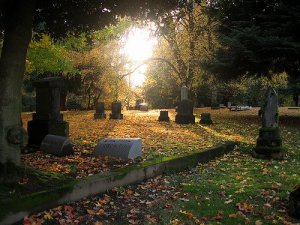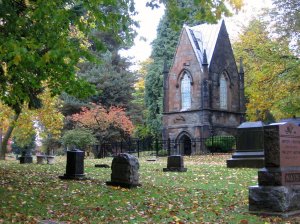“Our mission is to plant ourselves at the gates of hope- a different, sometimes lonely place, of truth-telling about your own soul first of all and its condition, the place of resistance and defiance, from which you see the world both as it is and as it could be, as it will be; the place from which you glimpse not only struggle but joy in the struggle. And we stand there, beckoning and calling, telling people what we’re seeing, asking them what they see.”
Victoria Safford, from The Impossible Will Take a Little While: A Citizen’s Guide to Hope in a Time of Fear
I heard this “meditation,” as it was quoted, while on a run a few weeks ago through Lone Fir Cemetery, one of my favorite sacred places. I was listening to “On Being,” a beloved podcast. It is always a great place to go to reflect, to listen to inspiring stories and be surrounded by history. Cemeteries are visceral places where we can connect to the past, and Lone Fir is no exception. Steeped in history and very much rooted in the development of Portland as a city, I feel very fortunate to live only a few blocks away. It is a place I have visited in the rain storms, seeking cover underneath broad Bigleaf Maple trees. I have visited in the cold and dark, hearing my feet crunch audibly over a layer of ice and snow while the world around me was quiet and still, frozen. I have visited in the early morning, light just straining through overlapping branches. I have visited in the evening, the day at its end, contemplating the hundreds of souls whose bodies were buried here. Lone Fir is the oldest cemetery in Portland, designated a historic landmark. Its oldest grave dates back to Emmor Stephens, who died in 1846.
I have reflected before on how the fragile balance of our time on this earth is mystical and holds many unknowns. Our relationship with Nature is similar. Every time I visit this cemetery, I feel at peace, sharing space with the memory of the deceased, monuments erected in their memory. I feel at peace under swaying branches and small weeds growing along the edges of graves. I feel at peace knowing that someday, Nature will eventually triumph over us. Someday, a Bigleaf Maple tree will send its roots deep down into the ground, knocking over a carefully-placed grave.
Victoria Safford agrees with me. Life on this earth is precarious. It is as if the ancients never discovered that the earth is round. Hope is a lonely place. We are constantly teetering on the edge of knowing who we are, how we relate to other people, and questioning our own and others’ intentions. Sometimes there fine balance between truth telling and hurting someone’s heart. There is also often a fine line to draw between friendship and love. We see people from afar and we see people up close, intimately. We experience longing and rootedness. We enter into intimate relationships, yet will always only ever be ourselves alone. All at the same time. We all invite others into our world, beckon them to see it as we do, hoping that someone’s heart sees it the same way. And in the end, we love and we lose. We agonize and we question. We feel insecurity and fulfillment. All along, hoping to tell the truth.
Writing is a way of truth telling. It is a way, for me, to find some nugget of realness in the midst of swirling unknowns. For a moment, or even a whole paragraph, the pen is a tool of delving into reality and expressing it in terms that others can understand. It is a way that I can relate to Nature and its never-ending story, its deep roots and its broad leaves. Writing is not only a small place in which we can connect to history, it is a place where we can resurrect history. Writing keeps people alive. It makes sure that their graves only physical places to visit. Their memories, their true realities, lie in our stories. Writing resurrects these stories, it paints pictures, it tips a hat to all those people who have passed before us. It creates reality out of engravings and marble pillars in graveyards. It resurrects people’s lives.
This summer, I led a writing workshop with Write Around Portland, an amazing organization that I have written about before. Through eight weeks of writing with folks above the age of 55 at an LGBT community center, I felt the power of writing and community. Of truth telling. Our group was a place to connect and write and resurrect stories and laugh and reminisce and learn. I was constantly humbled and reminded of the power of history. Of stories. One of my participants is a big fan of William Carlos Williams, so one day I brought in one of his poems:
“Exercise in Timing” by William Carlos Williams
Oh the sumac died
it’s
the first time
I
noticed it
We were all quite stunned by this poem, five lines of such simplicity but also of such longing and mystery of observation. My response to it just rushed out of me, and I am glad to share it with you here, now, months later. Enjoy.
“An Exercise in Smiling”
Why is it
that you can never see
white teeth
in black and white photos?
Only in the eyes, can you see it,
any sort of happiness.
Why is it
that we can never see our own smiles
from where we stand?
Only in the mirror,
but when does the mirror
speak the truth?
Why is it
that people stare at each other
from across a bar
and then look down?
Is it a sign of shyness,
or do we change our minds?
Why is it
that I can never feel my real smile?
Only when I force my lips upward,
heart broken inside,
do I feel my teeth exposed.
Why is it
that we practice smiling
when we’re nervous to meet someone?
It’s like doing pushups,
maybe,
up down up down.
Why is it
that smiles are a sign of happiness?
Maybe it’s the closest thing to our hearts,when it beats up from our chests,
our throats,
to our mouths.



I have loved wondering with you under the big leaf maples, between the gravestones, and down the road to Write Around Portland’s writing session with you and William Carlos Williams. Thank you!
Thank you, Ruth! 😀